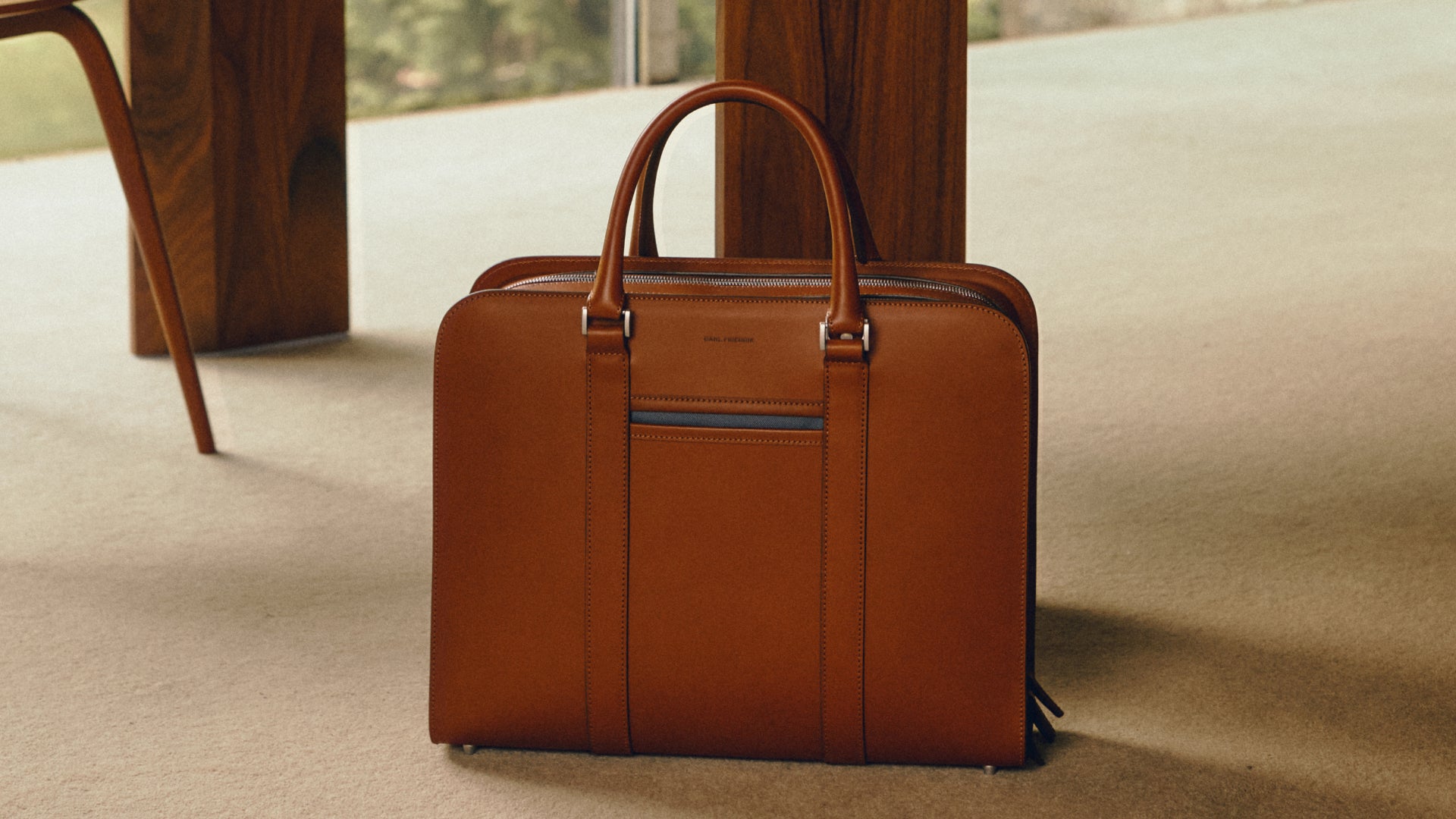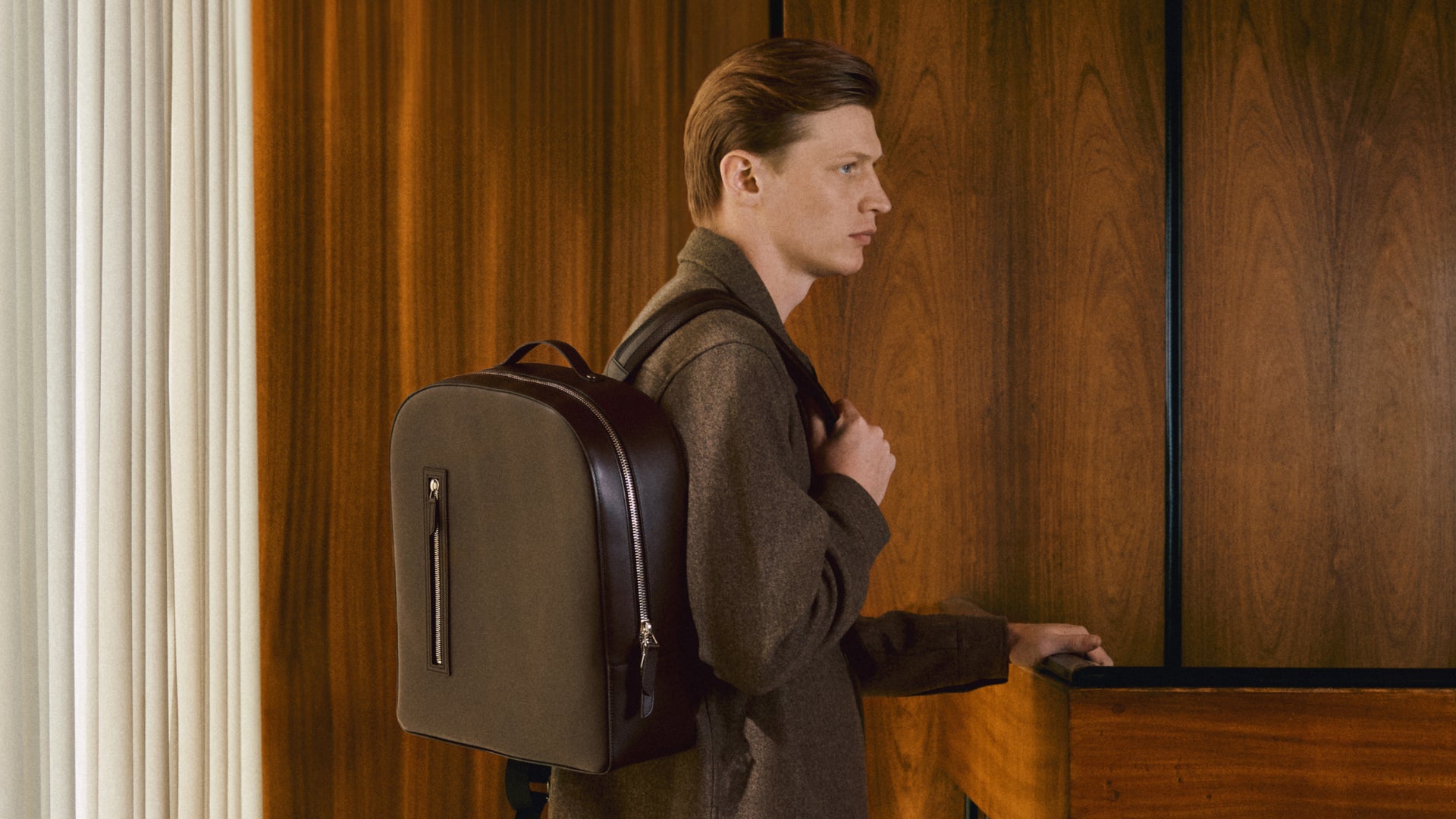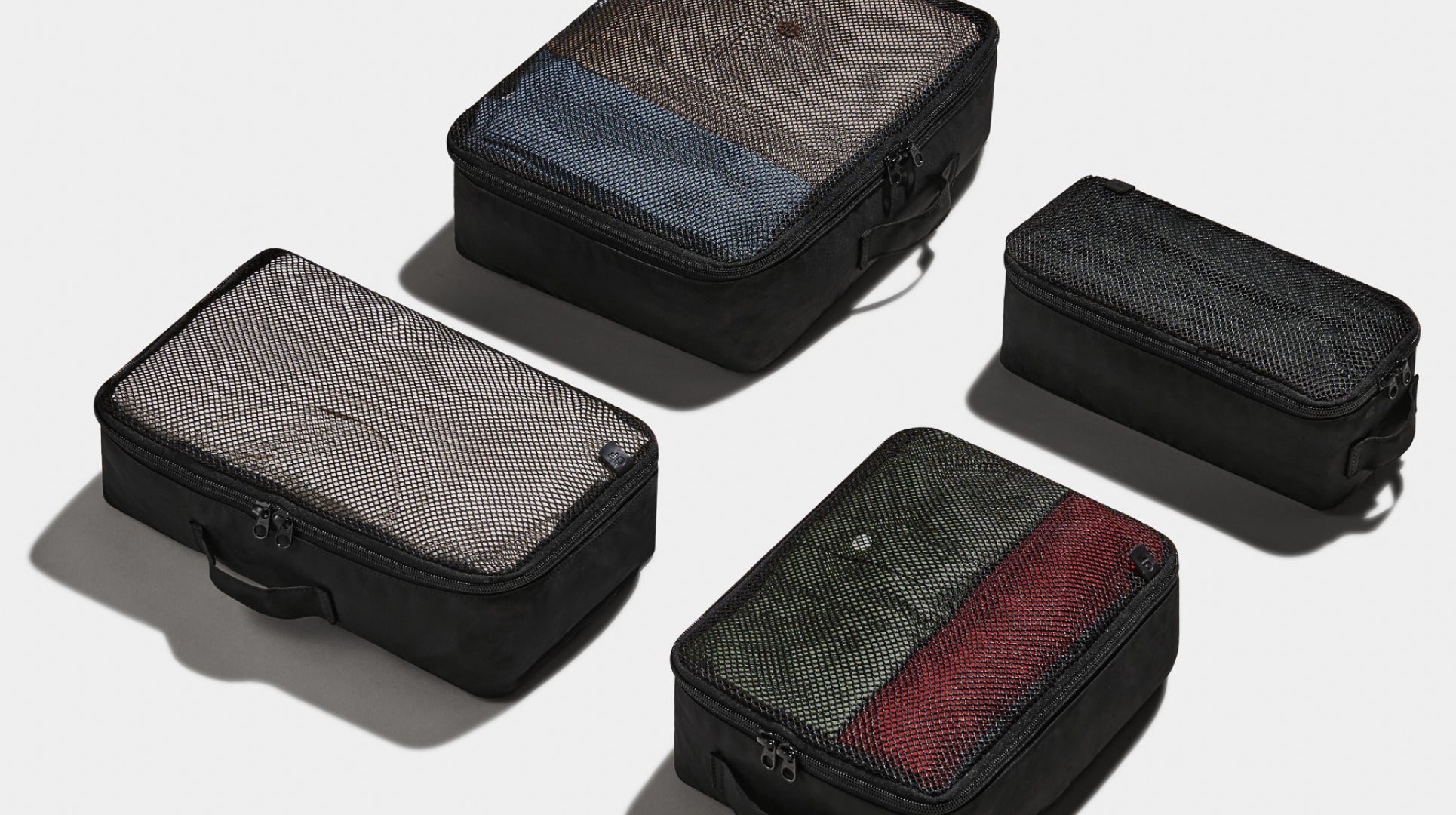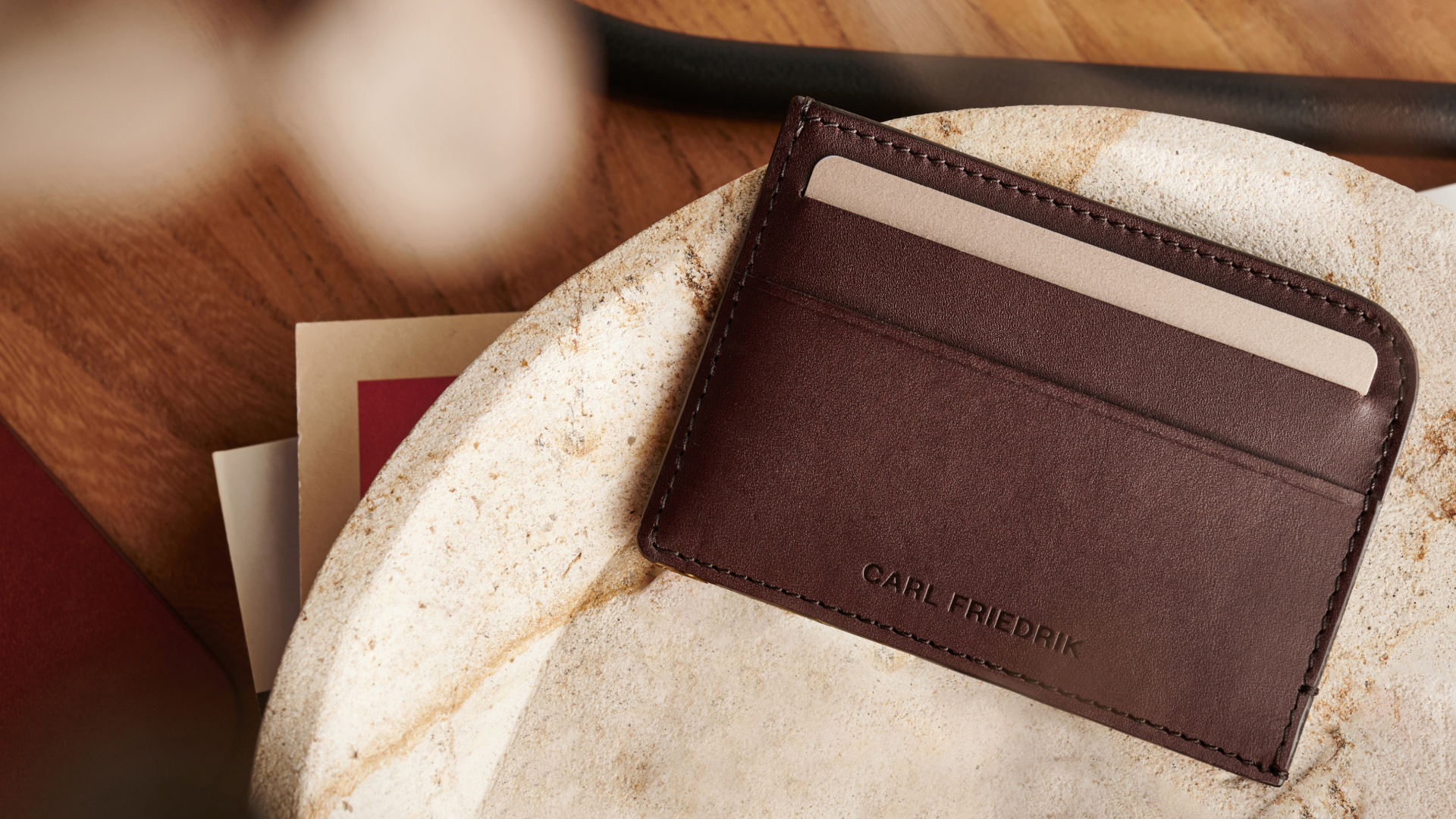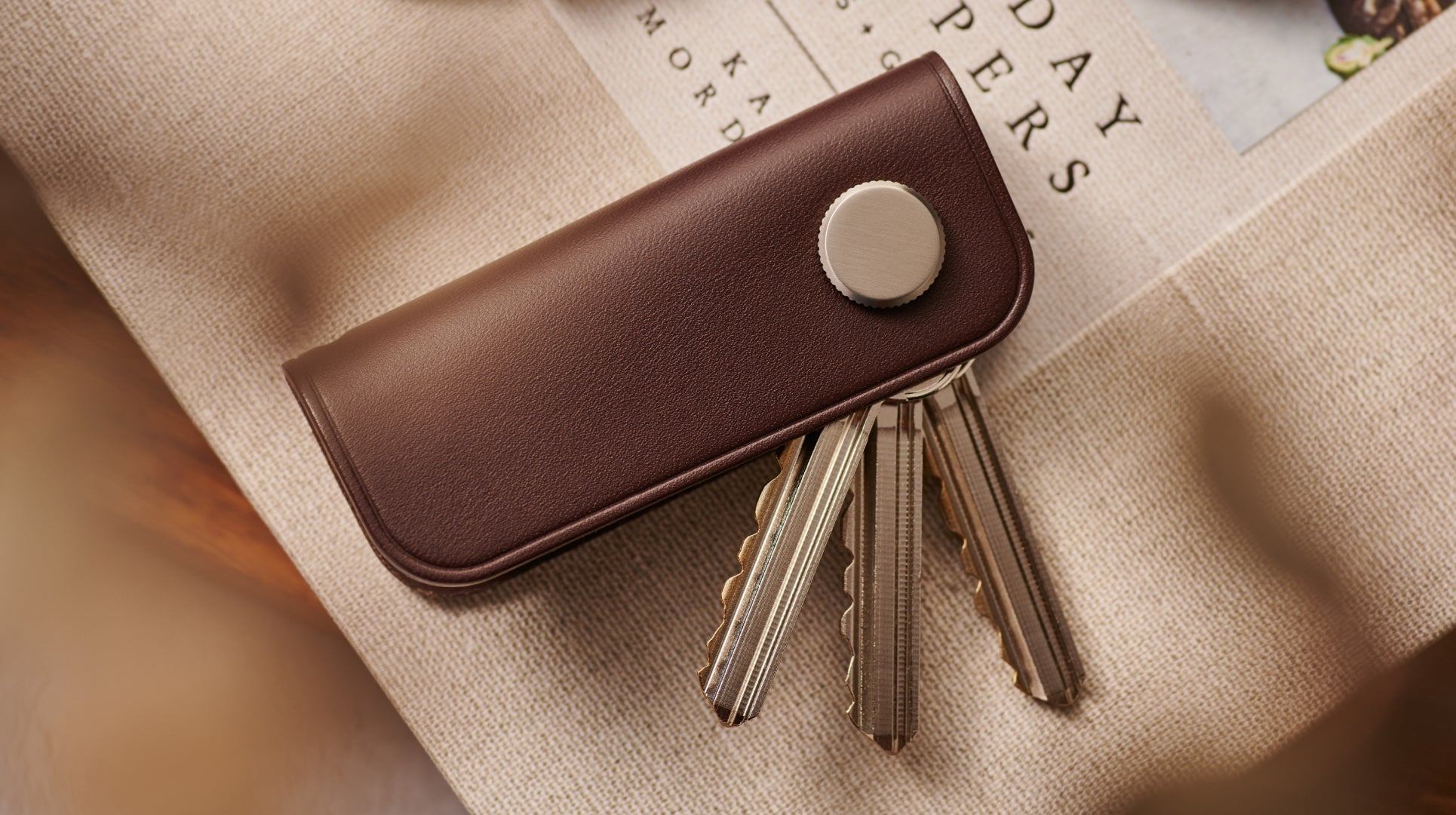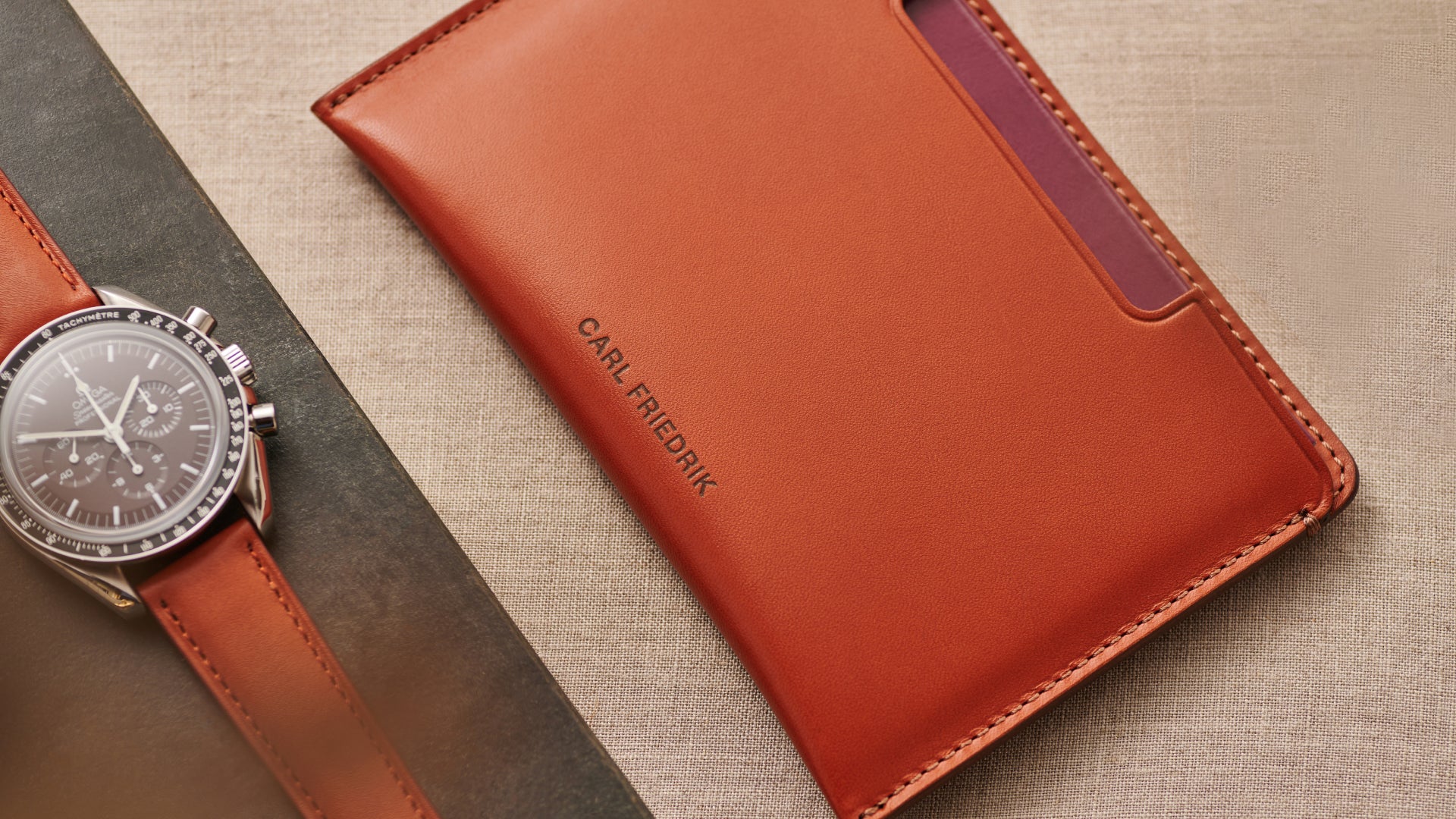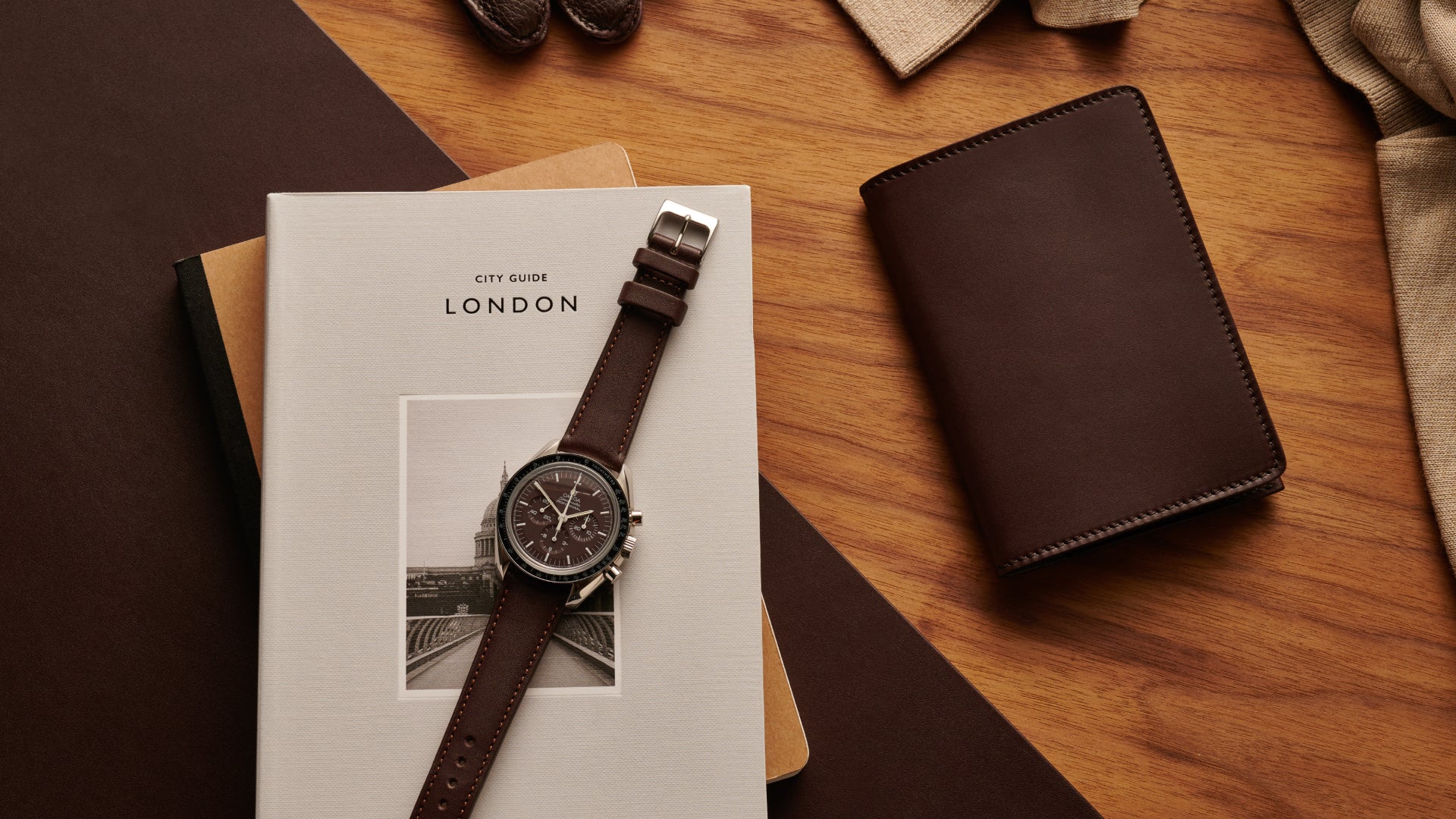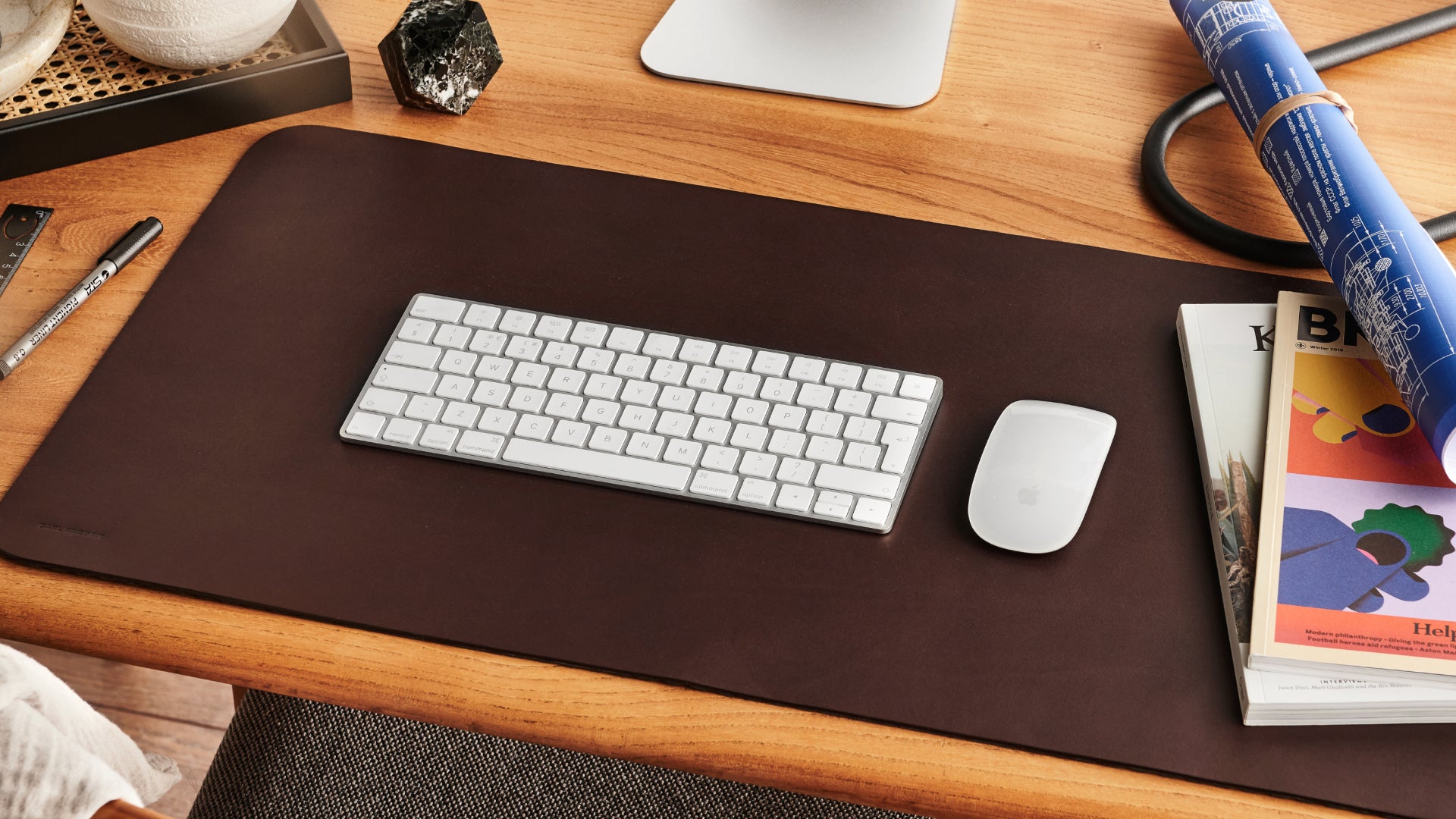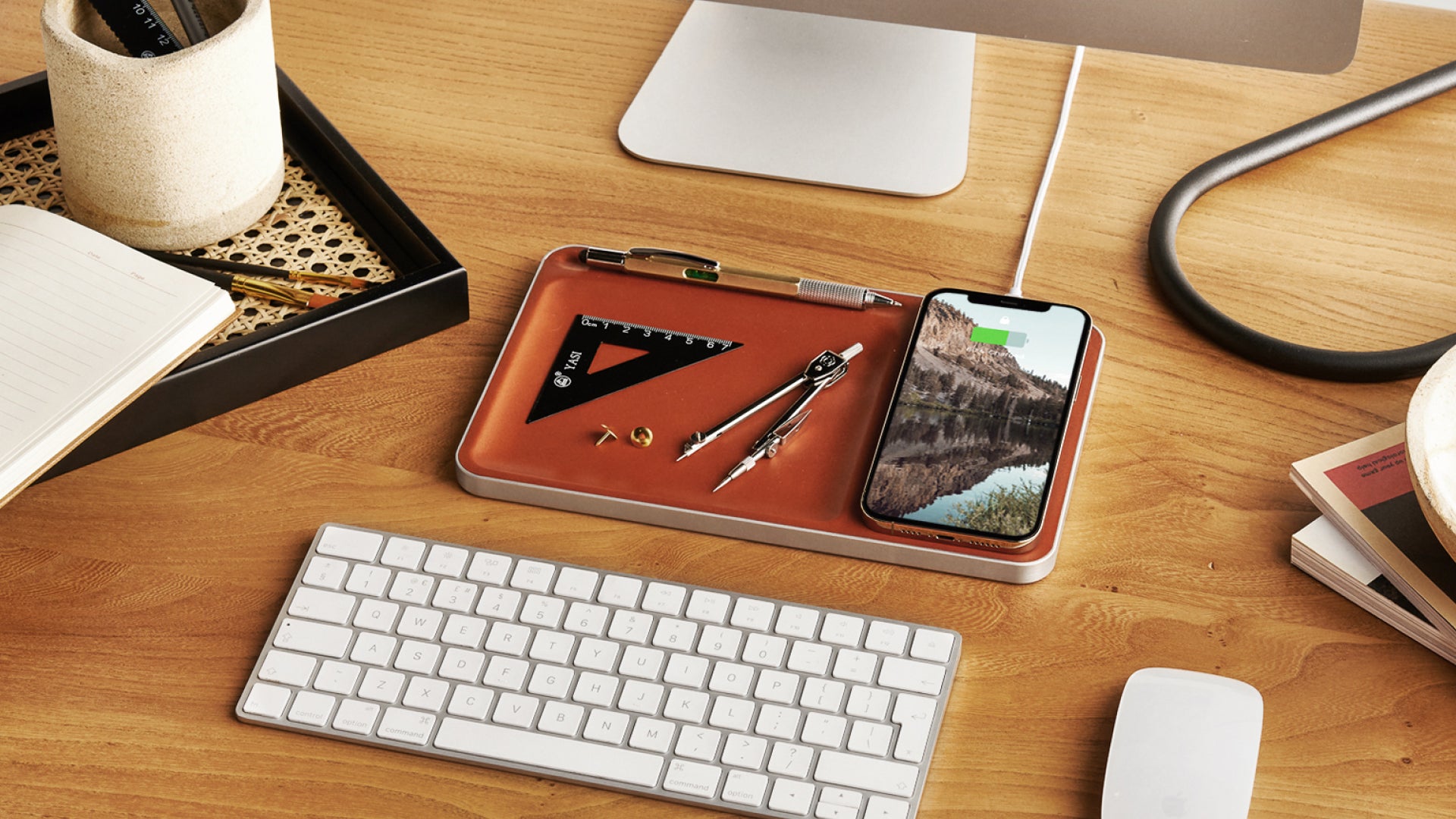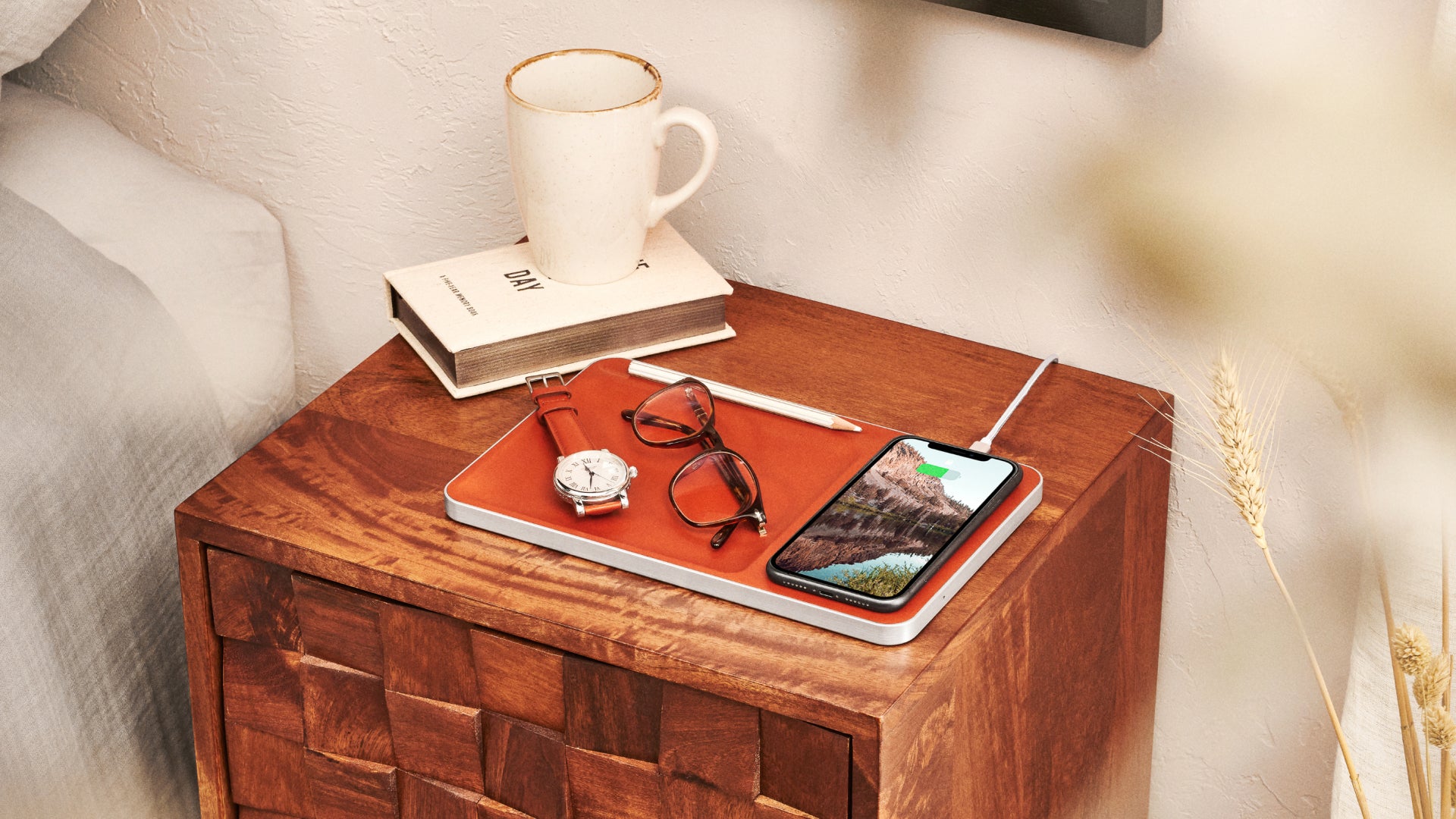Leather comes in many different forms. And pebbled leather — with its grainy, pebble beach-inspired texture — is up there with the likes of patent leather as one of the most unique.
While it’s increasingly used to produce everything from stylish iPhone cases to designer backpacks, pebbled leather still remains a bit of a mystery.
Ever wondered how the material gets its distinct, pebbled texture? Or whether it’s faux or animal leather? Well, it’s time to stop speculating and start learning.
Let's begin with a simple question: what is pebbled leather?

What is pebbled leather?
Pebbled leather (also known as pebble-grain leather) refers to any type of leather that has been finished with a bumpy embossing effect. This is achieved in a tannery by applying extreme heat or pressure to the leather.
The result is an uneven, slightly raised surface that gives pebbled leather its particular appearance and texture — and makes it stand out from smoother varieties of leather.
Because the embossing process is fairly straightforward, this pebbled pattern can be easily applied to both faux and real animal leather. In essence, the term really just refers to the texture, and has no bearing on the value of the leather.

Origins of pebbled leather
The act of embossing leather is certainly no new technique. There’s an old Scottish tale, possibly with roots in the 18th century, that argues pebbled leather was invented by a native tanner.
The story goes that the tanner stacked a large pile of hides on the stony, uneven floor of his tannery workshop. Having left the hides for a number of weeks, he returned to find the bottom one had been permanently imprinted with a pebbled pattern. This was due to the weight of the other hides exerting downwards pressure. Given that ‘Scotch-grain’ is another term for pebbled leather, there’s perhaps a kernel of truth in the tale.
What is more certain is that the pebbled leather process was patented by the 19th century. In fact, there is a historical record of Mr C.T. Woodman of Boston, Massachusetts seeking a patent for a new machine designed to improve the ornamenting (pebbling) of leather in 1864. To this point, the process had been ‘performed by hand, and [was] very slow and laborious’. In contrast, Woodman’s mechanised technique required minimal physical exertion and revolutionised how tanners created the pebbled leather finish.
Fast-forward to the early 20th century and pebbled leather became a popular material for casual men’s shoes, such as loafers and Derbies. And it was eventually claimed by the world of high-fashion, with the likes of Chanel and Gucci now renowned for their iconic pebbled leather handbags.

Benefits of pebbled leather
Naturally, much of the appeal of pebbled leather lies in its unusual, eye-catching and somewhat informal appearance. The material is a feature of men’s contemporary accessories. From Tom Ford backpacks to Mulberry portfolios and Yves Saint-Laurent wash bags, pebbled texture is ubiquitous.
While some prefer the smoothness of traditional leather — like the Vachetta leather we use in our collection of refined everyday briefcases — others clearly favour the unpolished aesthetic offered by pebbled leather.
Another advantage is that pebbled leather is less prone to scratching, or, at the very least, scratches appear less noticeable. A combination of the partially raised surface and irregular patterning tends to hide minor scuffs quite effectively. So if you’re a purveyor of fine leather goods but prone to the odd accident, pebbled leather might just be for you.
Sustainability also has a part to the play in the argument for pebbled leather. But first a slight detour. During the tanning process, it’s common for certain parts of the hide to be discarded due to perceived imperfections. Often these blemishes are bites or injuries that scarred the animal’s skin when it was alive. The leather is still robust but will be rejected by manufacturers because of visual inconsistencies.
The application of a pebbling pattern to these pieces of leather helps to revitalise them, hiding any perceived defects. Instead of being discarded as waste, they can now be used to create quality leather goods. So in this way, embossing helps to make the leather industry that bit more waste efficient.

Uses of pebbled leather
Pebbled leather is incorporated into a wide variety of everyday consumer goods. Start with shoes. As far back as the early Victorian period, the hunting shoes of British elites were typically embellished with a distinct leather grain finish. Nowadays you can find moccasins, brogues and even Dr Marten’s boots sporting a similar pebbled look.
Not only do we like to wear pebbled leather, we like to sit on it too. We’re of course talking about upholstery. Pebbled leather adorns our living room furniture, car seats and even bar stools.
One prominent use of pebbled leather — particularly in the States — is in the production of American footballs. The cowhide (not pigskin, a common misconception) leather is imprinted with a pebble-grain texture that helps players to grip the ball. Check out the NFL’s Wilson ‘The Duke’ official game ball for a closer look.

How is pebble grain leather made?
The modern method for producing pebbled leather is fairly straightforward, relying on an upgraded version of Woodman’s mid-19th century pressing machine. The embossing takes place after raw animal hides have first been tanned (the chemical reaction turns them into leather) and dyed. You can learn more about these stages in our article on the leather tanning process.
The sheets of leather are now passed through a large industrial metal press. Etched onto the upper plate of the press is a pebble pattern. The press is stamped down onto the leather with such force that it is instantly (and permanently) embossed. To a lesser extent, hydraulic rolling machines are also used to imprint the leather.
From this point, various finishing treatments are applied to the leather that will shape its physical characteristics and eventual use. For example, the leather could undergo any number of surface treatments designed to make it hydrophobic (waterproof), fire-retardant, glossy or even buffed to produced a napped, suede-like finish.
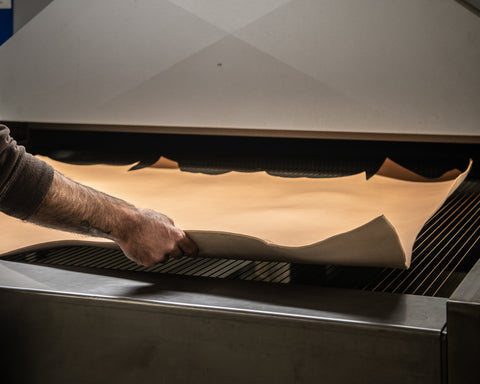
Is pebbled leather durable?
You can find leather at either end of the cost spectrum embossed with a grain finish. Ultimately, the pebbled effect has no major bearing on the longevity of a product. Its durability will fundamentally be decided by the quality of the leather.
Take the full-grain, vegetable-tanned leather we use in our range of luxury leather bags. The leather is taken from the strongest part of the cow’s hide and the vegetable tanning process only enhances its robustness. If we asked our partner tannery to imprint a pebbled pattern onto the leather, it wouldn’t affect its inherent durability.
By the same token, cheaper cuts of genuine leather, which are taken from weaker sections of the hide, have an inferior shelf life. Again, the application of a pebbled finishing treatment will not impact the material’s resilience.

How to care for pebbled leather
If you’ve invested in a quality pebbled leather product, semi-regular cleaning and conditioning will keep it looking better for longer.
Both faux and natural pebbled leather can be cleaned using a clean microfibre cloth lightly dampened with warm water. Before applying to the entire surface, make sure to patch test a small, concealed section of the leather. Rubbing in small semi-circles should help to remove any dirt. Alternatively, a soft-bristled brush is another option if the dirt proves tough to dislodge. Tougher stains can be treated with a leather cleaner; we recommend spending time finding a cleaner that is purpose-made for your type of leather and to always patch test new products.
The picture is very different with leather conditioners. These products soften and nourish leather goods, preventing them from drying out over time. However, never use conditioners on faux leather. Unlike natural leather, synthetic variations lack open pores on their surface necessary for absorbing conditioner. As the conditioner can’t penetrate the surface, it just forms a sticky layer that is a real nuisance.
Natural pebbled leather will benefit greatly from the application of a leather conditioner every few months. We recommend using a light polish over wax; this is because thick wax can easily build up in the grooves, leading your product to become tacky.
Takeaway
There you have it, a deep-dive into the world of pebbled leather. Whether or not you’re a fan is ultimately a matter of taste (or texture). We’d love to hear which side you’re on in the smooth vs pebbled leather debate in the comments below.
